When we learn to drive, we don’t learn much about load restraint, but as more and more pick-ups are sold to recreational users, this knowledge is becoming increasingly important to have.
There are two basic types of pick-up. A flat-deck or flat-bed pick-up has a flat tray often with fold-down removable sides and rope rails. These are more popular with farmers. A wellside pick-up has moulded metal sides and a fold-down tailgate – these are more popular with recreational users and tradespeople.
Should you buy a pick-up truck? If you do, you’ll need to know how to load it safely.
A universal rule for loading a pick-up is to block the load against the headrest, if possible. It’s much more difficult to stop a load that’s in motion vs a load that is blocked from moving.
You must also provide enough load restraint devices to stop items falling on the road. If you need to know this more in-depth, this online load restraint training course teaches you everything you need to know for pick-ups, trailers, vans, cars, roof racks and more. Ratchet straps are by far the best method for securing the load – check the course for how to pick the right ones and use them.
Loading a flat-deck pick-up
Flat deck pick-up trucks are more rugged and, as the tray can be accessed at the tray level from three sides, they are more convenient in certain applications.

The rope rails are the key part of the load security system as they are where you’ll attach ratchet strap hooks (ropes are not as convenient or reliable, but the name has stuck). The rail is connected to the deck at dropper points. The space between droppers is call the span. It’s best to connect your hooks as close to the droppers as possible as this is the stronger part; connecting in the middle of the span can cause the rail to bend.
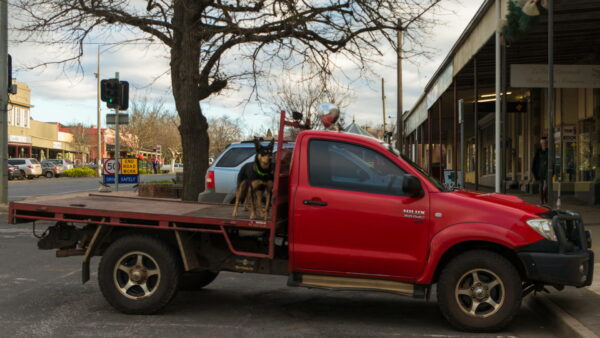
You can use ratchet straps on the rope rails with the sides up or down, but don’t tighten the straps over the edge of the sides because this will bend them in, causing the straps to become loose. Also, don’t attach a ratchet strap to something that’s not a proper rope rail, otherwise you will bend it.
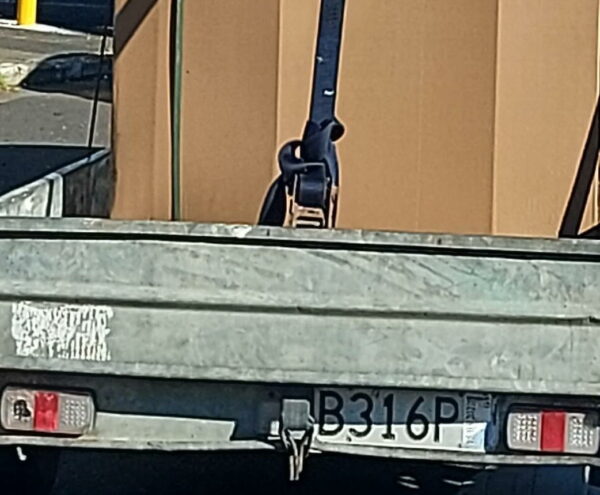
Any load you are carrying should not be more than twice as high as it is wide or it risks tipping over, even when strapped. If you do have to carry a tall load, block it at the front, sides and rear to stop it moving; it’s better to carry it in a trailer with tall sides, such as a cage or box trailer.
Dogs should be carried in a custom cage when on the open road, not simply tied to the headboard where they can suffer eye damage from flying insects and debris.
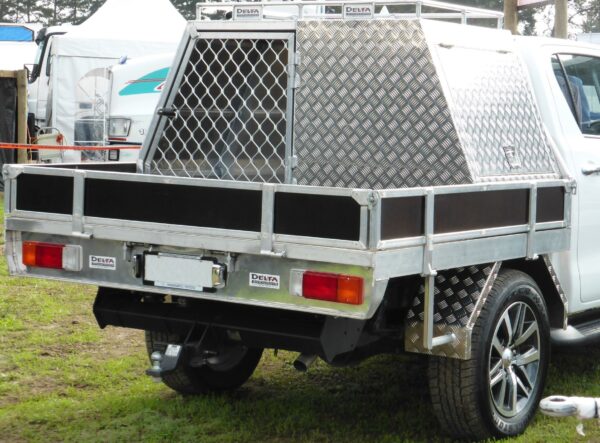
Loading a wellside pick-up truck
Wellside pick-ups usually have some kind of cover. A lockable hard cover is better, but less flexible for taller loads. A canvas cover is adequate for weathertightness and to stop items blowing away, but it’s not secure.
Lockable toolboxes are available, but take up precious space on the deck.
As you can’t fold the sides down, there is no rope rail on either side. There are usually at least four cleats or tie-down points in the tray, two at the rear and two near the headboard. The rating for these will be in the vehicle’s manual, but expect it to be somewhere between 200-350kg.
If you have sports bars or other cosmetic trim, these are not rated for using as a tie-down point. Rope hooks and rails along the top side of the wellside are usually for fastening a canvas cover or a light restraint, not securing a heavy load.
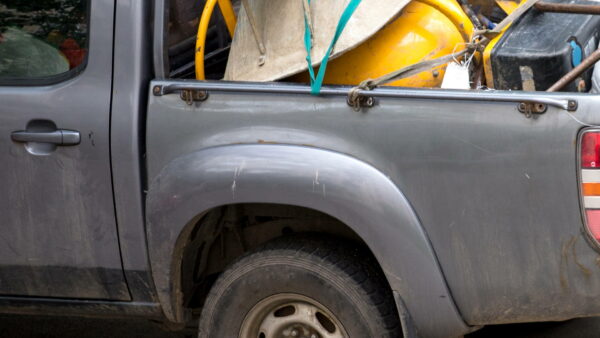
The important thing in a wellside ute is to prevent items from moving. The tray will be slippery, so items can slide around easily and cause damage to the sides. Obviously, items must not be allowed to bounce over the sides or slide out the back.
Large items should either be blocked against the headboard (but mind you don’t crack the rear window), or blocked against other things that are blocked against the headboard. Then they should be strapped down.
If items are above the level of the sides, they will be exposed to the wind and other forces and must be restrained; any load at risk of blowing away must be restrained.
If the tray isn’t long enough, it can be left down and items placed on it, as long as they are restrained adequately by either using a barrier or tying the load down another way.
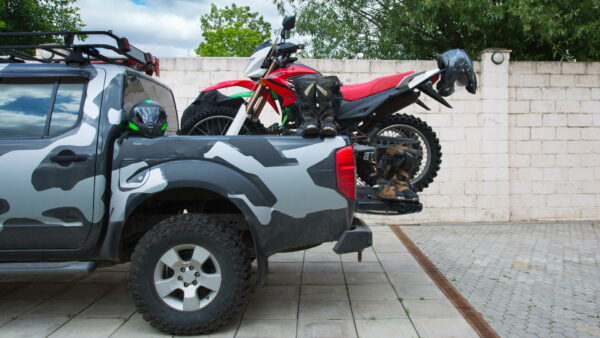
Long items should not be placed over the upright tailgate, but rather blocked by the tailgate and attached to the headboard.
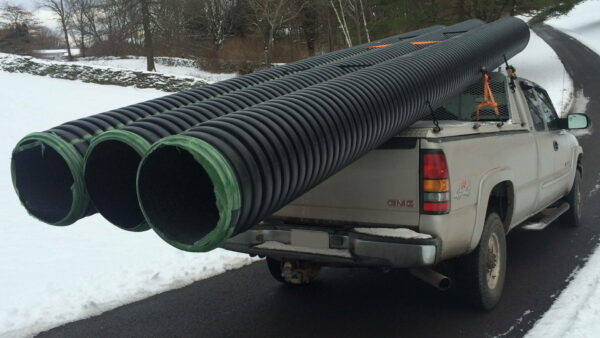
When loading and unloading, it’s best not to stand on the pick-up’s tray as they often have minimal grip, so it’s easy to lose your footing, plus it’s easy to fall off the back.
Loose loads such as gravel can be carried in either type of pick-up. The flat-deck pick-up will tend to be more rugged, but it’s more difficult to keep loose products on the ute, while the wellside’s walls provide an excellent means to hold loose items. Getting the loose load out is more difficult in a wellside, though.
